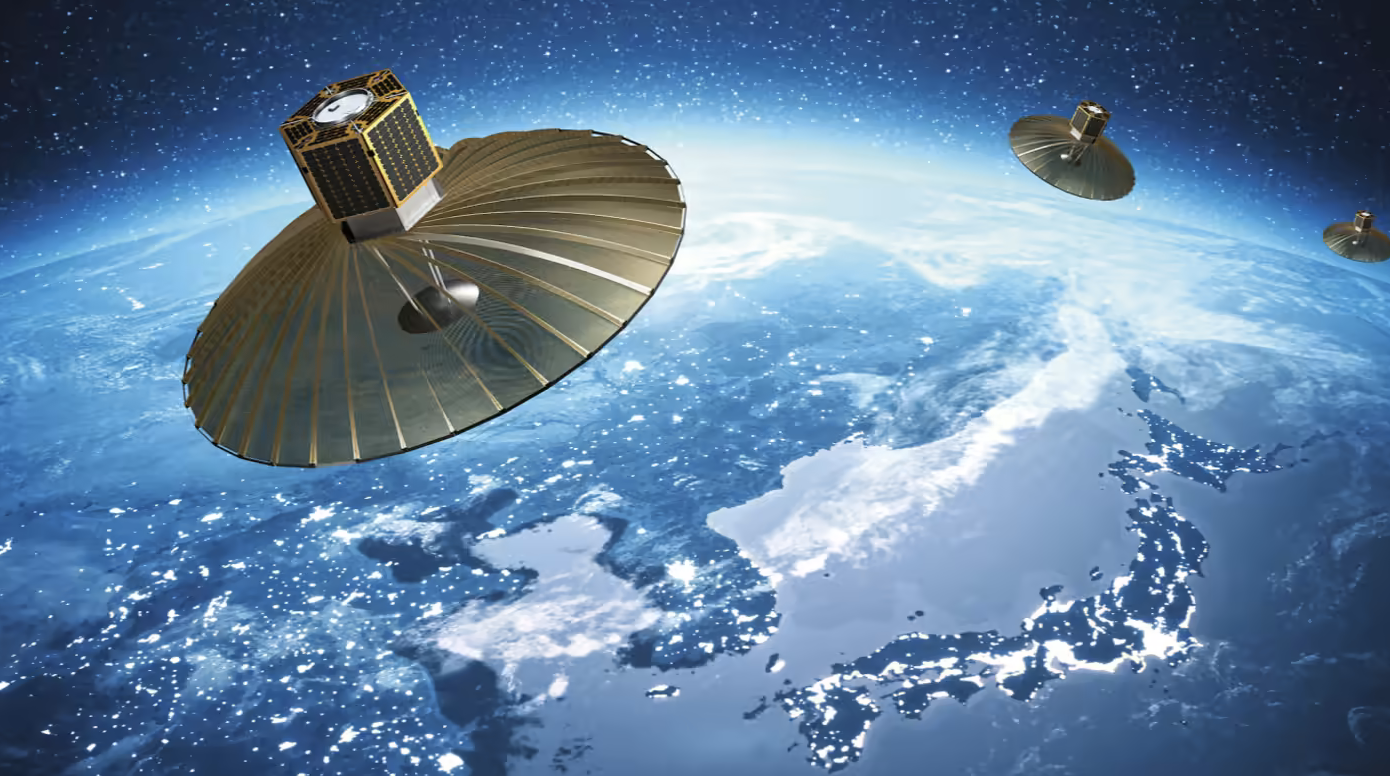Space race in an age of international competition
China’s first successful use of an anti-satellite weapon (ASAT) to destroy one of its old weather satellites in 2007 was a milestone in Japan’s space program. Beijing’s test to assess its military improvements in space would be a causal factor into Tokyo’s decision to revise its “pacifist-only” approach to the use of outer space. One year after China’s successful ASAT test, Japan introduced its first landmark reform to address new challenges arising from outer space, the Basic Space Law. The Basic Space Law of 2008 aimed at strengthening Japan’s security using all tools of power short of aggressive or offensive actions.
Tokyo’s recent activism in outer space must be understood in the broader context of Japanese grand strategy. Japan is a maritime island-nation, heavily dependent on natural resources imports for its export-oriented industry. In other words, Tokyo relies on an open international system that entails secure sea lanes across the Indo-Pacific oceans. Japan is therefore reliant on U.S. naval power to control maritime chokepoints and ensure revisionist powers are kept at bay.
China is perceived as the most serious long-term challenge to the current American led maritime order. The rise of China to great power status is considered an existential threat to Japan’s sovereignty by policymakers in Tokyo. As stressed by Michael J. Green, Senior Advisor and Henry A. Kissinger Chair at the Center for Strategic and International Studies (CSIS), a powerful China has historically drawn concerns in Japanese ancient states, such as the Ritsuryō State or the Tokugawa Shogunate. Present-day threat perceptions derived from China’s military power are no different. The PLA’s successful ASAT test must therefore be understood in a context of great power competition in the Asia-Pacific region.
Current challenges to the balance of power in East Asia consequently compelled Japan to align its space program to its grand strategy imperatives. The Basic Space Law of 2008 and the subsequent far-reaching reforms launched under Abe’s second term as Prime Minister would open the door for a more assertive approach to outer space security.
Origins of Japan’s space program
Historically speaking, the Japanese space program was mostly civilian-oriented. Despite post-war Japan was initially forbidden from developing aviation and aerospace technologies, Tokyo is now acknowledged as one of the most advanced nations when it comes to space related technologies. Japan’s early achievements, such as the takeoff of the 1955 “pencil rocket”, culminated in the successful launch of its first satellite in 1970. After the Soviet Union, the United States and France, the East Asian archipelago became the fourth nation to successfully put a satellite into orbit.
For several decades, Japan’s space program would remain entrenched in pacifism. Under the 1969 “principle of peaceful use of space” resolution, the Japanese Self Defense Forces (JSDF) was not allowed to develop its own satellites or any other space asset with potential military use. To fulfill its security function without violating the 1969 resolution, the JSDF was compelled to use civilian sector satellites or reconnaissance spy satellites with imagery data similar to those of US commercial-satellites.
Although the 1969 resolution specified that outer space should be for peaceful purposes, the beginning of the North Korean missile test program in the 1990s, coupled with growing Chinese political assertiveness in Asia, forced Tokyo to revise its pacifist-oriented outer space strategy. One of the first steps taken by Tokyo to deter potential external threats was the 2003 deployment of a Ballistic Missile Defense system (BMD). From then on, decision makers in Tokyo would gradually abandon the “non-military purpose” of the 1969 resolution to adjust to new geopolitical realities.
Perceived threats and changes in the regional balance of power required efficient space capabilities to deter hostile Chinese and North Korean activities. The development of national security state-of-the-art spatial technologies also called for a more centralized approach at the institutional level. A new agency, called Japan Aerospace Exploration Agency (JAXA), was therefore established in 2003, merging three different organizations previously dependent on an equal number of ministries. A 2012 legislation centralized policy and budget decision under the Prime Minister and the Cabinet Office and JAXA was allowed to engage in security projects with ministries directly linked to national security, such as the Ministry of Defense.
From strictly non-military use to collective self-defense and cross domain operations
A decisive response to the changing security environment of East Asia was the 2014 reinterpretation of Article 9 of the constitution. The relaxation of the constitutional prohibition on Japan’s use of military power has had far-reaching consequences on Tokyo’s outer space strategy.
The new course for security policy set by Abe’s government on pacifism allowed Japan to transit from an exclusively non-military use of outer space to a more defensive oriented military posture. The ending of the self-imposed ban on “collective self-defense” granted the JSDF the opportunity to operate with US forces even if the country is not under attack from a hostile actor, beefing up bilateral cooperation and commitment on space deterrence. Successful space deterrence is paramount for Japan since most advanced military and economic assets are increasingly dependent on spatial technologies and, according to some experts, could be the decisive domain in future wars.
Since future wars might be “won or lost in space”, the 2018 Medium Term Defense Program introduced the concept of “cross domain operations” which aims at “organically fuses capabilities in all domains including space, cyberspace and electromagnetic spectrum”. In other words, the 2018 defense policy document shows how strengthening space security has now taken center stage in Japanese military thinking.
Aside from strategic planning, new cutting-edge technologies are also required to face threat initiatives in space. Bolstering Space Situational Swareness capabilities (SSA) is especially important for Japanese security. The rapid development of Chinese and Russian ASAT potential, such as killer satellites and communication jamming systems, requires Tokyo to effectively track and identify hostile objects in outer space. Japan intends to counter rival ASAT assets with the planned deployment of a satellite constellation and improved information-sharing with Washington, the East Asian archipelago’s main regional ally. Stronger Japanese SSA capabilities would not only deter ASAT activities, but also bolster US deterrence in space, arguably the least resilient and most vulnerable military domain in US strategic thinking. Successful hostile actions aimed at crippling US intelligence gathering advantage in case of military conflict would severely weaken Washington’s ability to effectively maintain its commitment to a “Free and Open Indo-Pacific” (FOIP), one of Japan’s key strategic imperatives.
Given the importance of threat recognition for defense purpose in space, the main mission of the newly established Space Operations Squadron, is to actively conduct SSA activities, such as “monitoring space debris or suspicious satellites, which could pose a threat to Japanese satellites”. The JSDF are expected to receive their first SSA satellite in 2023. Japanese SSA satellites will be integrated with those of the US to allow for better information sharing on space surveillance, a core recommendation of the 2015 Guidelines For Japan-U.S. Defense Cooperation.
Conclusion
The establishment of the Space Operations Squadron, one year after the creation of the US Space Force, testifies the increasing importance of defense-oriented cooperation in space between Tokyo and Washington. Growing cooperation on state-of-the-art technologies and closer military interoperability with the US are paramount for a long term efficient Japanese strategy in outer space. Not only does Washington remain the most advanced spacefaring nation, with the highest space expenditure in the world, but the American superpower is also Japan’s closest ally against Beijing’s assertiveness in East Asia. The US is therefore the only powerbase with sufficient military and economic power to deter China from altering the status quo in space. As emphasized by Washington’s statement that “attacks to, from, or within space” might trigger article 5 of the US-Japan Security Treaty, Japanese current space security strategy has to be understood in the context of unfolding geopolitical trends in East-Asia.
Aside from strategic rivalries in the Far East theatre, a more security-oriented approach to space policies has potential far-reaching implications for Tokyo’s space industry and science & technology, the other milestones of Japan’s space objectives alongside national security according to Marco Aliberti, Senior Research Fellow at the European Space Policy Institute (ESPI). Historically speaking, the strictly non-military use of outer space has had adverse effects on Japan’s space industry. Such regulatory limitations constrained the emergence of Tokyo as a competitive player on the global market of space economics. In other words, unlike other nations with advanced space programs, Japan’s industry hasn’t benefited from “dual-use” spillovers for civilian purposes to generate more sustainable economic growth.
Current Japanese decisionmakers intend to reverse such limitations by adjusting Tokyo’s space policies to present-day international economic and political trends. Following this line of thought, the 2022 National Security Strategy plans to strengthen the collaboration between civilian and military assets in space to build up a “virtuous cycle to further encourage the development of its space industry”. Security considerations interrelated with an increasingly dynamical industrial and scientifical ecosystem can therefore sow the seeds of growth to reinvigorate Japan’s sluggish economy.
Picture credits: iQPS / NikkeiAsia







Be First to Comment